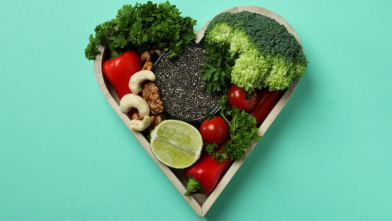Reducing food waste isn’t just good for the environment, it’s good for the budget. But it does require a little thought, and perhaps some freezer space and recyclable containers.
Here are five tricks for enjoying more of what you buy and grow.
- Make the most of the whole vegetable (and fresh herbs). Root vegetables, like beets, carrots, turnips, and radishes have delicious leafy tops. While many markets remove them, if you use those that have those tops you can make pesto with them. Have leftover fresh vegetables, like zucchini, mushrooms, or carrots? They can be shredded and turned into pancakes with an egg, grated onion, garlic, herbs, and some breadcrumbs. When a recipe calls for chopped or minced fresh herbs, use both the leaves and stems—if the stems are still green and pliant. Is a large piece of fresh ginger root languishing? Slice it and grind in a food processor. Freeze in ice cube trays and then store the ginger cubes in a bag in the freezer to be used later.
- Fish is more than the fillet. Instead of buying salmon, rockfish, or tuna fillets, consider cooking a whole fish or other parts of the fish. Trout, mackerel, and snapper are perfect for grilling whole. Stuff them with herbs, sliced lemon, and garlic. Steam rockfish and bass. Or roast or bake the fish on a bed of thinly sliced fennel and oranges or lemons. Rub with spices and grill or smoke salmon, tuna, or cod collars, cheeks, or bellies, which you can find at your local fish market. Ask the counter staff if they carry any locally harvested fish. They tend to be underused and a good value. Another cost saving option is to buy large quantities of fresh fish at wholesale stores then cut it up and freeze it in reusable containers so it's ready when you need it., and beef bones are all valuable flavor enhancers for stock. (So are the shells from the lobster or crabs you splurged on.) Freeze them in a bag until needed, then roast and feature in a homemade stock.
- Turn stale bread into croutons or crumbs. Freezing bread is a great way to keep it from going stale. But if you don’t have freezer space and your bread is going south, dry slices at a low temperature until slightly brown and then pulse in a food processor for breadcrumbs. Add herbs and spices if you want to flavor them. Alternately, you can cut the bread into bite-sized pieces, spray with olive oil, and bake until brown and crispy for croutons. Both can be bagged and frozen.
- Soups and stews love all ingredients. Whether you want to make your own stock or a pot of soup or stew, you can use all sorts of leftover vegetables, herbs, bones, and meat to make a pot of liquid gold. All those chicken bones you saved in the freezer can be roasted and added to a big pot of water with onions, garlic, celery, carrots, and any leftover fresh veggies—even greens to make a stock for soup or stews. Add your favorite herbs, from dill to sage, at the end of the cooking process. Freeze in containers. For your soup or stew, use your stock and add other leftovers: chicken, cooked beans, cooked veggies, brown rice, or grains.
- Don’t pass over fruits or veggies that may not be Instagram ready. Ugly produce can be just as tasty as the perfect versions. In fact, check out companies like Misfits Market, Imperfect Foods, and Hungry Harvest, which sell what would otherwise be wasted harvest.








